Homeschool Unit Study: King John of England
Why is it so easy to hate England's notorious King John? Oh, let us count the ways in this trash-talking unit study.
Why is it so easy to hate England's notorious King John? Oh, let us count the ways in this trash-talking unit study.
“Foul as it is, hell itself is made fouler by the presence of King John,” wrote Matthew Paris just a few short years after England’s much-despised ruler died of dysentery. There’s no question that the son of Henry II and Eleanor of Aquitaine was universally despised by his subjects, so it’s kind of ironic that John’s legacy includes—however reluctantly—the foundation for modern-day democracy. Mark the anniversary of King John’s death this fall by learning more about the worst king of England.
He was notoriously treacherous, lecherous, and cruel, but we owe our democratic government in part to King John, whose sheer terribleness inspired British nobles to curtail the rights of the monarchy and invest the nobility with rights of their own. When John signed the Magna Carta—after arranging this nephew’s murder, scheming against his Crusading brother, and generally being the worst ruler in Christendom—he forever changed the relationship between ruler and subjects.
READ THIS
Ivanhoe
Sir Walter Scott’s historical romance paints Prince John (acting king for Richard III, who’s off fighting in the Crusades) as scheming, tyrannical monarch, which is pretty much how his contemporaries and modern historians have viewed him.
(Middle grades)
The Merry Adventures of Robin Hood
Scott’s influence is apparent in Howard Pyle’s collection of Robin Hood stories, which cast tax-happy John as the tale’s central villain.
(Middle grades)
King John: Treachery and Tyranny in Medieval England: The Road to Magna Carta
John’s life of “intrigues, quarrels, battles, sieges, negotiations, truces, and betrayals” is illuminated through contemporary chronicles and his own letters in Marc Morris’ scholarly, readable tome.
(High school)
WATCH THIS
The Lion in Winter (1968)
Set in 1183, during Henry II’s reign, this film adaptation of the play by James Goldman focuses on the contentious relationship between John’s parents and certainly doesn’t cast a positive light on the effete, unpleasant prince—even if you might feel a little sorry for him when you imagine his childhood.
Robin Hood (1973)
Disney’s animated animal take on the Robin Hood legend includes a thumb-sucking, greedy Prince Johns whose comeuppance at the film’s conclusion feels well-deserved.
This was originally published in the Fall 2016 issue of HSL. Photo: Wikimedia Commons.
We the People: A Community Model for Exploring the U.S. Constitution
“A Community Conversation to Understand the U.S. Constitution” was a profound and powerful experience for Carrie’s homeschool.
“A Community Conversation to Understand the U.S. Constitution” was a profound and powerful experience for Carrie’s homeschool.
One of the more rewarding learning experiences I’ve had with my 14-year-old son this year has been participating in We the People MN, a series of community teach-ins about the Constitution held at Solomon’s Porch, a Minneapolis gathering space housed in a former church. Run completely by volunteers, We the People MN bills itself as “A Community Conversation to Understand the U.S. Constitution.” I wanted to share a little about our family’s experience with the series in the hope of inspiring other programs like it across the country.
The idea for the series came from Cara Letofsky, a South Minneapolis resident who posted on her neighborhood Facebook group that the 2016 election made her want to learn more about the Constitution. About 60 people responded that they shared that desire to come together as a community to educate themselves politically. A small group of about ten volunteers followed up to plan the series, deciding what amendments they especially wanted to learn about and collaborating to identify community experts who might be willing to tackle leading a discussion of particular amendments. Working their community connections, they lined up a group of highly qualified presenters willing to volunteer their time, including a law professor from a local university, a Minneapolis city council member, attorneys, law students, and organizers from groups that are deeply involved in such contentious Constitutional issues as gun control laws, the right to vote, and reproductive rights.
The organizing committee decided on a format of 10 two-hour presentations, spaced out every two weeks from mid-January 2017 to late April 2017. The first program was a kick-off potluck (because everything always goes better with good food) and a public reading of the entire Constitution, with participants taking turns reading sections aloud at the mic. The organizers also distributed free pocket copies of the Constitution, donated by one of the organizers, Constitutional law professor Matt Filner. Finding free or cheap pocket Constitutions isn’t difficult, luckily. The National Center for Constitutional Studies, for instance, offers a bulk purchase of 100 pocket Constitutions for $40 on their website.
Cara Letofksy, the woman who’d sparked the idea, expected perhaps 20 people to show up to the first presentation. To her surprise, over 80 people attended that first event, and attendance has usually averaged between 100 to 150 participants at subsequent events.
In their initial planning discussions, the organizers knew they couldn’t cover the entire Constitution, so they decided to focus on Constitutional rights that might be most directly challenged under a Trump administration. Other communities might want to choose a different focus, such as looking at ways the Constitution directly impacts local issues and controversies.
The We the People MN series has covered such issues as the branches of government and separation of powers, as well as the First Amendment’s guarantees of freedom of expression and assembly and the Second Amendment’s guarantee of the right to bear arms (as well as the limitations implied by the wording of the amendment). One program was devoted to the right to privacy (and the limits on our privacy). Another event focused on the Fifth, Sixth, and Thirteenth Amendments and their relevance to criminal justice today. The series’ last presentation on the amendments will look at the right to vote guaranteed by the Fifteenth, Nineteenth, and Twenty-Fourth Amendments—and how that right to vote is being steadily eroded today. The series’ last gathering, planned for the 100th day of the Trump administration, will feature a community potluck and “next steps” discussion.
Each event has included a “TED”-style talk by an expert to set the stage for further discussion, followed by time for participants to talk in small groups and share their thoughts and bring up questions for the expert presenter. Almost every presentation has also included brief talks by local activists working in some way on problems raised by ongoing Constitutional debates. Often, these activists have given participants in the programs concrete ideas about how to get involved. For instance, at the event devoted to Second Amendment issues, a presenter from the group Protect Minnesota passed out factsheets about upcoming gun legislation and tips for creating effective talking points. The group highlighted that the most effective advocates usually find a way articulate their personal connections to proposed legislation.
Each presenter also typically sends out readings ahead of time through the We the People MN Facebook page for participants who want to take a deeper dive into topics, though the readings aren’t required to understand the presentations. The readings have ranged from excerpts from the Federalist Papers to summaries of key Supreme Court cases to up-to-the-minute news articles about contemporary Constitutional controversies.
For my son and me, attending these events has been a bonding, highly relevant way to study civics together. Throughout our week, we often find ourselves still talking about what we learned at the most recent We the People presentation. The series has given us new tools for understanding how the Constitution relates to our everyday lives and the lives of those around us.
I’ve also found the series personally helpful as I’ve stepped up my own game as a citizen this year. I’m calling my legislators and attending more public hearings, meetings, and protests than ever (and when I can, hauling my son along with me). Studying the Constitution in this way has given my son and me a clearer sense of what people fighting for change are up against and how we as citizens can make the best use of our time and people power.
Above all, I love that my son has seen people of all ages and backgrounds getting together every other Sunday afternoon to educate ourselves about our Constitution. To me, that’s been such a powerful example of lifelong learning and civic engagement, one I hope will stick with him the rest of his life. I think another crucial piece of the whole experience has been learning from people who are actively involved in the conversation about how to define our Constitutional rights and who are fighting to preserve those rights.
The volunteers who set up We the People MN are hoping to export the model elsewhere. They have plans to create a curriculum to help other people set up their own series, ones that will be relevant to their local communities. If you’d like to learn more, see videos of the presentations, and keep apprised of curriculum developments, you can visit the group’s public Facebook page.
Teaching Literature-Based History without a Curriculum
Truly, the biggest hurdle to cobbling my own history curriculum together has been organizing the resources in such a way that I know where they are, I remember all of the ideas that I had, and I don’t leave anything out.
“Truly, the biggest hurdle to cobbling my own history curriculum together has been organizing the resources in such a way that I know where they are, I remember all of the ideas that I had, and I don’t leave anything out.”
I must have filled in so very many history worksheets as a kid sitting at a desk with a textbook, but I can’t tell you much that I learned sitting in that desk. The truth is that most of the history I learned as a kid came from Bill and Ted’s Excellent Adventure and historical fiction that I found on the library shelves. For that reason, I knew that I wanted to take a literature-based approach to history with my kids.
The secular homeschooling community isn’t exactly awash in literature-based options, though. Last year when I couldn’t find anything that would work for teaching early American history to my 2nd graders, I decided to wing it. We made our way from prehistory through the colonial period, and this year in 3rd grade we’re attempting to read our way through the Revolutionary War through the Civil War. Given how many great books and resources are out there, it hasn’t been so hard to put it together myself, and, as so often happens in homeschooling, I’m learning considerably more than I knew before.
Truly, the biggest hurdle to cobbling my own history curriculum together has been organizing the resources in such a way that I know where they are, I remember all of the ideas that I had, and I don’t leave anything out.
My solution to the organization issue is creating a collection of spreadsheets for the year. I divide the year up into units, with each unit getting its own spreadsheet. This year, my spreadsheets are titled Revolutionary War, Westward Expansion, Slavery, and Civil War. Those with older children studying in greater detail may also want to divide larger units into mini-units and give them their own spreadsheets. For example, World War II might be divided into mini-units such as The Role of Women, Allies and Axis Powers, The Holocaust, The Homefront, and Military Technology.
The spreadsheet has two purposes. First, the spreadsheet serves as a comprehensive list of all of the resources I’d like to use within a unit. It includes field trips, historical fiction selections, selected activities from supplemental resources like History Pockets, nonfiction literature, videos, poems, and audiobooks.
The spreadsheet’s second purpose is to help me keep track of where things are. My columns at the top are On Hand, Library, Field Trip, and Activity. Given how many books we’ll use, it’s important to keep track of which books I have on hand at home and which books I’ll pull from the library shelves. This makes it easy, too, for putting together our list for the library. The Field Trip column serves as a visual reminder for me to make room on our calendar and take any necessary planning steps to pull off the field trip. In the Activity column, I mark the page on which the activity can be found and the acronym for the book it can be found within.
In addition to my spreadsheets, the other organizational tool that keeps my DIY literature-based history curriculum humming is a milkcrate. I’ve pulled every history resource I’ll use for the year and placed it in the milkcrate for ease of finding. It helps to avoid all of those awful times when you’re meandering around saying, “I know we have it somewhere, but I can’t find it.”
Whatever period of history you’re studying with your kids this year, I hope that these organizational tips can help you feel more in control of the sprawl that comes along with studying history with literature.
(We’re Amazon affiliates, so if you purchase something through an Amazon link, we may receive a small percentage of the sale. Obviously this doesn’t influence what we recommend, and we link to places other than Amazon.)
Unit Study Idea: The African-American Struggle for Civil Rights, Past and Present
Carrie’s family wanted to study the history of civil rights in the United States, and they found the project incredibly rewarding. These were some of their favorite resources.
Early this year, I told my thirteen-year-old son I’d like to investigate a historical subject with him over an extended period, to give what we learned time to really sink in. He was game, so I showed him a list of potential topics I wanted to learn more about and asked if any intrigued him. He looked over my list and chose the American civil rights movement.
“It seems especially relevant to what’s going on in the news right now,” he commented. Neither of us had any idea just how relevant the topic was going to be.
The last few weeks have been tumultuous ones in America, with the shootings of Alton Sterling, Philando Castile, and Charles Kinsey and of police officers in Dallas and Baton Rouge sparking grief, outrage, and renewed calls for change. Philando Castile’s death hit particularly close to home for our family; Castile was killed during a traffic stop only three miles north of our St. Paul neighborhood, and several of our friends and neighbors have children who attend the school where Castile worked as a beloved cafeteria supervisor.
The following resources are ones my son and I studied together over the last few months, as well as a few that I’ve found personally helpful. These resources are only a very small sampling of the wealth of materials and perspectives out there, but these resources have given my son and me a historical context about systemic racism and African-American resistance that I just didn’t get from my own school education—or from my life as a white person who’s privileged to ignore racism if I choose. I’ve really needed that historical context these last few weeks. I think everyone does.
BOOKS FOR KIDS AND ADULTS
(roughly for ages 13 and up, though obviously you’re the best judge of what your kids are ready for)
Freedman’s book provides a window into Jim Crow America, detailing opera singer Marian Anderson’s struggle to establish herself as an artist in spite of being rejected by a conservatory based on her race and barred from hotels and restaurants as she toured America. The story continues with her success in Europe, her groundbreaking 1939 performance at the Lincoln Memorial, and the rest of her trailblazing career.
The Port Chicago 50: Disaster, Mutiny, and the Fight for Civil Rights by Steve Sheinkin
Sheinkin tells the amazing true story of black sailors who were barred from combat duty during World War II and assigned to loading munitions at a segregated naval base at Port Chicago, California—without receiving proper training or supervision on safe munition handling. In July 1944, a massive explosion at the base killed 300 sailors. In response to the unsafe conditions and unjustly segregated work environment, 244 sailors refused to go back to work until their grievances were addressed, ultimately leading to fifty of the men being charged with mutiny. Sheinkin takes an in-depth look at this important early case in the fight for civil rights.
“Letter from Birmingham Jail” by Dr. Martin Luther King, Jr.
Martin Luther King wrote this essay in April 1963 in response to a statement by eight white Alabama clergymen criticizing King’s methods of nonviolent civil disobedience. King’s argument, begun while he was in jail for breaking an injunction against demonstrating, is a powerful defense of breaking unjust laws in order to fight for a higher good, as well as an excellent model of persuasive writing. It’s also helpful for putting current Black Lives Matter protests into historical context; both King and many Black Lives Matter activists argue that in order to get the powerful to come to the table to negotiate, it’s sometimes necessary to break laws and disrupt “business as usual.”
March, Books One and Two by John Lewis, Andrew Aydin, and Nate Powell
In these graphic-novel style memoirs, Representative John Lewis tells the story of his childhood on an Alabama sharecropping farm and his role in the 1963 March on Washington and the Selma Voting Rights March, among other highlights of a life spent fighting for human rights. Lewis's role in the recent Capitol Hill sitdown strike for gun control makes this an even more timely read.
Marching for Freedom: Walk Together, Children, and Don’t You Grow Weary by Elizabeth Partridge
This account of the 1965 voting rights march from Selma, Alabama begins in compelling fashion: “The first time Joanne Blackmon was arrested, she was just ten years old.” Partridge keeps her focus on ordinary children and teens involved in the historic march and does an excellent job of making the march accessible and understandable for kids. I also love that she shows that there were sometimes disagreements and missteps within the movement; too often, I think we tend to envision the civil rights movement as a perfectly unified, top-down movement led by Martin Luther King. The reality was much messier and more grassroots than the oversimplified version of history enshrined in most school textbooks. This is a great book to read in conjunction with Turning Fifteen on the Road to Freedom by Lynda Blackmon Lowery, a firsthand account by a young person who participated in the Selma March, and We've Got a Job: The 1963 Birmingham Children's March by Cynthia Levinson.
How It Went Down by Kekla Magoon
Kekla Magoon’s young-adult novel tells the story of a black teenaged boy shot by a white man who mistakes him for a dangerous thief and gang member when he’s actually carrying home groceries from the local corner store. Narrated from multiple points of view, the book reveals how painfully difficult it can be to find the truth in the aftermath of a racially charged shooting.
Myers’s 1999 young-adult novel uses an innovative structure — part imaginary screenplay, part diary — to tell the story of Steve Harmon, an African-American teen on trial for murder. Through fragmentary flashbacks, readers gradually piece together Steve’s role in the crime and his journey through a criminal justice system that is predisposed to see a boy who looks like him as a “monster.” For my son and me, this was an eye-opening introduction to the problem of racial bias in our justice system.
X by Ilyasah Shabazz and Kekla Magoon
This fact-based novel by Malcolm X’s daughter and her collaborator Kekla Magoon chronicles the African-American leader’s early struggles with racism as a young boy in Michigan, his years in Boston and Harlem, his imprisonment for burglary, and his subsequent conversion to Islam and decision to change his name from Malcolm Little to Malcolm X.
A FEW MORE BOOKS FOR ADULTS AND OLDER TEENS
Butler’s novel tells the story of Dana, a modern African-American woman transported through time from 1970s America to the antebellum South, where she encounters her ancestors, a white slave owner’s son and his black slave. Through multiple trips spaced over several years, Dana is forced to intervene in her ancestors’ lives in ways that test everything she believes. Butler’s novel is the most compelling, searing examination of slavery and its legacies that I’ve ever encountered, exploring issues of race, sex, family, and gender in mind-blowing ways.
How to Slowly Kill Yourself and Others in America by Kiese Laymon
In this collection of essays, Kiese Laymon examines how racism damages African-American men, and how they in turn inflict pain and damage on themselves and the people they love, especially African-American women. Weaving together hip-hop, stand-up comedy, and other pop culture references, Laymon offers a passionate, introspective, vulnerable perspective on what it’s like to be young, black, Southern, and male in today’s America.
ON THE SCREEN
Eyes on the Prize: America’s Civil Rights Movement 1954-1985 produced by Henry Hampton :: The first six episodes of this fourteen-hour PBS documentary series cover the civil rights movement from the 1954 Montgomery bus boycott to the signing of the Voting Rights Act of 1965. The next eight episodes focus on such key events as the rise of the Nation of Islam, the Detroit riot of 1967, the Black Panthers, and the clash over Boston school desegregation. The series features riveting, occasionally violent news footage and interviews with people involved on both sides of the movement.
All the Difference directed by Tod Lending :: This PBS documentary follows two low-income African-American young men from the violence-ridden South Side of Chicago who struggle to beat the odds and complete high school and graduate from college. The documentary offers a close-up look at what helped these two students overcome multiple obstacles and setbacks.
IDEAS FOR OTHER RESOURCES
In Memoriam of Philando Castile :: The Minneapolis-based community-building organization Pollen put together this collage of music, spoken word, art, and poetry as a response to the shooting of Philando Castile. Especially noteworthy for homeschoolers might be the list of resources compiled by Twin Cities spoken word artist and community organizer Guante. That list can also be found here: http://www.guante.info/2016/07/a-few-resources-links-and-readings.html
YOUR LOCAL HISTORICAL SOCIETY
One thing I didn’t want to do with my son was pretend that racism and civil rights abuses were only a southern problem. Up here in the Twin Cities, one of our most painful legacies is the fate of St. Paul’s Rondo neighborhood, a thriving, vibrant African-American community that officials obliterated to make way for Interstate 94.
The same kind of destruction happened in many other cities, including Chicago, Miami, Los Angeles, Seattle, and Baltimore. The Minnesota Historical Society recently organized a bus and walking tour featuring Rondo history that my son and I were able to participate in. It was a great way for us to learn about the continuing effects of racism and meet people who’d been affected by losing their homes and businesses in the name of progress. A Google search of a phrase such as “How interstates damaged black neighborhoods” yields a plethora of articles. With just a little bit of digging, I suspect you could find similar stories and opportunities for investigation close to home, too—or if you already know about these stories, I’ll bet there are ways you and your family can take an even closer look at the racist legacies in your own back yard and on the roads you travel every day.
History at the Movies: The Tudors
It’s no wonder the Tudor years are popular with movie-makers — their period of English history really does feel like one big soap opera.
It’s no wonder the Tudor years are popular with movie-makers — their period of English history really does feel like one big soap opera. From the War of the Roses (which paved the way for a Tudor takeover) to the larger-than-life Henry VIII to the world-changing reign of Queen Elizabeth, there’s plenty to explore in these films set during turbulent Tudor times.
Wolf Hall
This adaptation of Hilary Mantel’s trilogy (the final book is out now) reminds us that Henry VIII wasn’t always an overweight wife-killer — in the early days, he was England’s heart-throb hero. Through the eyes of commoner-turned-adviser Thomas Cromwell, we watch Henry transform into a tyrant over the course of this miniseries.
A Man for All Seasons
Sir Thomas Moore butts heads with Henry VIII over the king’s role as head of the church in this gorgeously filmed period piece. It’s an old- fashioned, dialogue-driven film that really digs into the big philosophical question that defined so much of the Tudor era: Does the king or the church have ultimate authority?
Anne of the Thousand Days
Either you feel sorry for Anne Boleyn or you think she’s a scheming Jezebel, but this film tries to capture a more multifaceted view of the second Mrs. Henry VIII (and the first to be beheaded.)
Elizabeth
Though this adaptation plays fast and loose with some historical facts, it nonetheless does a brilliant job capturing Elizabeth I’s transition from opinionated individual to English icon. Cate Blanchett’s Elizabeth slowly realizes that her own feelings and dreams have to be sublimated if she wants to rule England — and she really, really wants to rule England.
I Spy a Unit Study
This winter is the perfect time to take a chronological deep dive into some of history's most celebrated spies.
This winter is the perfect time to take a chronological deep dive into some of history's most celebrated spies.
Francis Walsingham (ca. 1532–1590)
Queen Elizabeth’s adviser was the first great English spymaster, and the culmination of his secret intelligence work was the frame-up, capture, and execution of Mary Queen of Scots in 1586. Most of Walsingham’s efforts were directed against the Catholics, whom Walsingham, a staunch Protestant who vividly remembered the Protestant purges initiated by Elizabeth’s sister and predecessor, feared and mistrusted. Walsingham organized a spy network that would impress modern day intelligence agents, complete with forgers who could copy any seal, an army of letter interceptors, complex ciphers to protect his own mail, and spies everywhere.
Read This: The Queen’s Agent: Francis Walsingham at the Court of Elizabeth I by John Cooper
Benjamin Tallmadge (1778)
The so-called Culper Ring, led by Benjamin Tallmadge, tracked Tory troop activities in British-occupied New York City by actually joining Tory militias, feeding crucial information to the colonial army. They’re also credited with helping to bring down Benedict Arnold.
Read This: Washington’s Spies: The Story of America’s First Spy Ring by Alexander Rose
Mary Elizabeth Bowser (1860s)
Mary Bowser joined the Richmond Underground, a movement that worked to get enslaved people, Union prisoners, and Confederate deserters out of occupied Richmond, Virginia. When she managed to get work at the Confederate White House, Bowser was able to pass important confidential information on to the Union.
Read This: Spy on History: Mary Bowser and the Civil War Spy Ring by Enigma Alberti and Tony Cliff
Belle Boyd (1860s)
The Confederates had their spies, too, and 17-year-old Maria Isabella Boyd was one of them. Under guard for shooting a drunken Union solider who had insulted her and her mother, Belle charmed secret information out of her guard and passed it on to the Confederate troops.
Read This: Liar, Temptress, Soldier, Spy: Four Women Undercover in the Civil War by Karen Abbott
Sidney Reilly (1890s-1925)
The “Ace of Spies” was the model for Ian Fleming’s James Bond. The handsome, womanizing Russian-born British agent spied on 1890s Russian emigrants in London, in Manchuria on the cusp of the Russo-Japanese War, and participated in an attempted 1918 coup d’etat against Lenin’s Soviet government. Reilly disappeared in the Stalinist Soviet Russia of the 1920s.
Watch This: Reilly: Ace of Spies
Margarethe Zelle (1914-1917)
Better known as Mata Hari, Zelle became one of the most famous spies in history even though chances are pretty good that she never actually did any spying: She was recruited by the French and by the Germans, both of whom saw potential in her globe-trotting work as an exotic dancer, but she doesn’t appear to have given any intelligence to anyone. Still, when the Germans outed her as a double agent, the French had her arrested and executed tout suite, despite a lack of actual evidence.
Read This: Femme Fatale: A New Biography of Mata Hari by Pat Shipman
Virginia Hall (1930s-1940s)
“The limping lady” — so named because she’d shot herself in the foot and 1932 and replaced her amputated lower leg with a prosthetic limb — volunteered her services as a spy in occupied France, coordinating the activities of the Resistance under cover as a correspondent for the New York Post. Hall’s prosthetic foot, which she named Cuthbert, provided a convenient hiding place when smuggling top secret documents.
Read This: The Wolves at the Door: The True Story of America’s Greatest Female Spy by Judith L. Pearson
Klaus Fuchs (1940s-1950s)
Fuchs was a nuclear physicist who left Germany in 1933 to come to England, where he worked on “Tube Alloys,” the British atomic bomb project, before joining the Manhattan Project in the United States. Fuchs hated the Nazis, but he had complicated feelings about the post World War II world — which led him to feed information to contacts in the Soviet Union. Fuchs was arrested for espionage in the 1950s and imprisoned.
Read This: The Spy Who Changed the World: Klaus Fuchs, Physicist and Soviet Double Agent by Mark Rossiter
Melita Norwood (1962-1999)
Norwood worked as the assistant to the director at a British atomic research center for 37 years before her employers realized that she’d been passing secret information from her job on to the Soviets the whole time she’d worked there. By that time, Norwood was an 87-year-old grandmother, whose 1999 arrest made headlines and shocked everyone who knew her — including her family.
Watch This: Red Joan
Expand your study further with these spy books for kids:
Spy Science: 40 Secret-Sleuthing, Code-Cracking, Spy-Catching Activities for Kids by Jim Wiese
How to be an International Spy: Your Training Manual, Should You Choose to Accept It by Lonely Planet Kids
DK Eyewitness Books: Spy: Discover the World of Espionage from the Early Spymasters to the Electronic Surveillance of Today by Richard Platt
World War II Spies (You Choose: World War II) by Michael Burgan
Unit Study: The Legend of Blackbeard
The notorious English pirate was captured and killed by the forces of the Governor of Virginia more than 300 years ago this November, but his story is as fascinating as ever.
The notorious English pirate was captured and killed by the forces of the Governor of Virginia more than 300 years ago this November, but his story is as fascinating as ever.
Canons and gunfire broke the silence of Ocracoke Island in the early morning hours of November 18, 1718. The pirate Blackbeard’s ship had been ambushed unawares, but pirates are always ready for a fight, and for several hours, it seemed that the battle could go either way. In the end, though, the sloop Adventure couldn’t maneuver around the British fleet that surrounded it, and the notorious Blackbeard was dead. Royal Navy lieutenant Robert Maynard returned to port in triumph, with the pirate’s decapitated head swinging from his ship’s bowsprit.
Believe it or not, this story is only the tip of the iceberg: Blackbeard — who was probably originally christened Edward Thach or Teach — lived a life of drama befitting a, well, pirate. Likely, the man who would become Blackbeard — so called because of his long black beard — started out as a privateer, essentially a pirate who answered to the British government, but like many privateers, Thach realized that being his own master would be more lucrative than working for the royal government. Some of the stories you’ve heard about the infamous criminal are true — he really did light matches under his hat to give him a demonic appearance in battle, and he successfully blockaded the port of Charleston to get a chest of medical supplies — but the real-life history of Blackbeard is as interesting as any invention.
Read This
ELEMENTARY AND MIDDLE
For a simple, concise introduction to Blackbeard’s life and times, pick up Who Was Blackbeard? by James Buckley.
OK, there’s actually no evidence that Blackbeard (or, indeed, the majority of pirates) ever buried treasure — the event that pulls three time-traveling boys into Blackbeard’s wake in The Not-So-Jolly Roger by Jon Scieszka — but it’s easy to give a little suspension of disbelief to this wickedly funny pirate adventure.
The snappy, infographic-filled Pirates by Brian Williams is designed for flip-and-dip readers — you can learn a lot just scanning the pages for the bits that interest you.
HIGH SCHOOL
The captivating The Republic of Pirates: Being the True and Surprising Story of the Caribbean Pirates and the Man Who Brought Them Down by Colin Woodard is a great place to start a more engaged study of Blackbeard. Woodard focuses on the Golden Age of Piracy, in which Blackbeard and peers established organized government, and on former privateer Woodes Rogers, who helps bring down the developing pirate empire.
Maritime historian Baylus C. Brooks used DNA databases like Ancestry.com to trace the history of Edward Thrace in Quest for Blackbeard: The True Story of Edward Thache and His World, making a fairly convincing argument that the Jamaican resident — son of Capt. Edward and Elizabeth Thache — is the historical Blackbeard. Brooks turns a critical eye on pirate legend, trying to objectively recreate the world of colonial piracy.
If you want a gung-ho history of Blackbeard that paints the pirate as the first real American revolutionary, pick up Blackbeard: The Birth of America by Samuel Marquis. It’s a pro-pirate narrative that wears its biases on its sleeve — which might not be surprising since it’s penned by a descendant of another infamous pirate, Captain Kidd — but it can lend a little perspective to your reading list if you’re planning to read a few books. (Don’t make this your only book, though.)
Watch This
If you want to get a taste of the stereotypical version of Blackbeard, 1952’s Blackbeard the Pirate is a swashbuckling package of pirate nonsense tied up in an entertaining bow. It’s historically accurate only in the sense that it portrays historically hilarious stereotypes about the villains of the high seas.
The 2008 docu-series Real Pirates features Blackbeard along with some of his contemporaries — Captain Kidd, Captain Morgan, Mary Reed, and Anne Bonny — for an interesting look at the wider world of colonial-era piracy.
Do This
Listen to Horrible Histories’ “Blackbeard the Pirate” ditty, which includes verses like:
What my enemies feared
Was my thick, black beard
Which I always enjoyed
setting light to, oh
Play Merchants and Marauders, a board game that lets you choose between a career as a law-abiding merchant or a dastardly buccaneer. Make your fortune through savvy trade, carefully chosen missions, a little risk-taking, and the occasional plunder. (If your clan loves this game, it’s worth springing for the Seas of Glory expansion pack.)
This unit study was originally published in the fall 2018 issue of HSL.
Great Hoaxes in History — and the Real Stories Behind Them
Researching one or two of them is a great way to highlight the appeal of “fake news” — and makes for a fun investigative unit study.
Researching one or two high-level hoaxes is a great way to highlight the effectiveness of “fake news” — and makes for a fun investigative unit study.
Orson Welles’ infamous War of the Worlds radio broadcast — in which he spun the fictional tale of a happening-right-now alien invasion — probably didn’t freak out as many people as legend likes to suggest, but there have other hoaxes that successfully fooled people for years, sometimes centuries. Researching one or two of them is a great way to highlight the effectiveness of “fake news” — and makes for a fun investigative unit study.
Drake’s Plate
An inscribed brass marker left by Sir Francis Drake and the crew of the Golden Hind is one of those finds that must have seemed absolutely too good to be true when it was discovered in North Carolina in 1936. University of California, Berkeley, history professor — and major Drake buff — Herbert Bolton authenticated the plate himself — but when researchers in 1977 analyzed the artifact, they discovered it was a fake. The pranksters owned up: They’d created the plate as a joke on Bolton and didn’t know how to backpedal when he bought it for the Berkeley library collection.
Get the Real Story: You Wouldn't Want to Explore With Sir Francis Drake!: A Pirate You'd Rather Not Know by David Stewart
Archaeoraptor
Remember the Archaeoraptor liaoningensis? For a shining moment in 1999, it seemed like the link between present-day birds and dinosaurs had been discovered when a fossil found in China turned out to have the arms of a primitive bird and a dinosaur tail. National Geographic magazine published a feature on the fossil, which was immediately snapped up by a U.S. dinosaur museum. So plenty of people were embarrassed when the fossil was discovered to have been glued together by an enterprising Chinese farmer who did some fossil hunting in his spare time.
Get the Real Story: “The great dinosaur fossil hoax” (Cosmos)
The Bathtub’s Birthday
We talk a lot about how people share news on social media without ever fact-checking, but this isn’t a new problem: In 1917, journalist H.L. Mencken wanted to call people’s attention to that very gullibility. He published an article called “A Neglected Anniversary,” celebrating the not-at-all-correct anniversary of the modern bathtub with a lot of made-up “facts.” The joke was on Mencken, though — newspapers continued to reprint the story for years, and people believed the tale of the tub even after Mencken owned up to his trick.
Get the Real Story: Clean and Decent: The Fascinating History of the Bathroom and the Water-Closet by Lawrence Wright
The Masked Marauders
Musical supergroups were all the rage in the late 1960s, and it’s hard to imagine a weirder and more must-hear collaboration than the Masked Marauders, a group that allegedly featured the vocal talents of Mick Jagger, John Lennon, Paul McCartney, and (Nobel Prize-winner) Bob Dylan. Greil Marcus invented the band for a Rolling Stone article, thinking that its over-the-top claims to fame (an extended jam between bass guitar and piano with Paul McCartney playing both parts, 18-minute cover songs) would clue people in on the joke. Of course it didn’t— the self-titled debut album (recorded as a spoof ) sold 100,000 copies.
Get the Real Story: “Masked Marauders ‘Supergroup’ Exposed” (Rolling Stone)
(We’re Amazon affiliates, so if you purchase something through an Amazon link, we may receive a small percentage of the sale. Obviously this doesn’t influence what we recommend, and we link to places other than Amazon.) This article originally appeared in the fall 2018 issue of HSL.
Get to Know Abigail Adams
A feminist and an abolitionist, Abigail Adams—wife of one U.S. President and mother of another—was a woman ahead of her time. Learn more about her with this relaxed unit study.
A feminist and an abolitionist, Abigail Adams—wife of one U.S. President and mother of another—was a woman ahead of her time.
“I wish most sincerely there was not a slave in this province. It always appeared a most iniquitous scheme to me—to fight ourselves for what we are daily robbing and plundering from those who have as good a right to freedom as we have,” Abigail Adams wrote to her husband while he was working on the still-evolving U.S. Constitution. She also pointed out that Adams and the rest of the country’s new leadership had an opportunity to make life a little fairer for women — a suggestion that her husband laughingly dismissed.
Abigail Smith married John Adams in 1764, and the letters they wrote to each other over five decades of marriage read like a history of the young United States. Between 1762 and 1801, the couple wrote more than 1,100 letters, with postmarks from Philadelphia (where John spent most of the Revolution), Europe (where John was an ambassador), New York, Boston, and Braintree, Massachusetts, where Abigail kept the family farm while John’s career took him around the world. “My dearest friend,” Abigail calls her husband, and Lysander, referring to the captain of the Spartan fleet. In the 1770s, she teasingly signs her letters Portia, alluding to the long-suffering wife of the Roman Brutus. In their letters they discuss everything from cattle to philosophy, from politics to smallpox, and Abigail never hesitates to express her opinions. It’s tempting to think about what the United States might have become if women like Abigail Adams had been given a voice in its creation—but while we may lament that lost possibility, there are still plenty of reasons to explore the life of this remarkable woman.
Read This
Elementary: Who Was Abigail Adams? by True Kelly: Don’t let the awful Netflix series put you off these books, which are a solid introduction to historical figures like Adams. This one focuses on homeschooled Adams’ insistence on the importance of education for boys and girls.
Elementary: Abigail Adams: Pirate of the Caribbean by Steve Shenkin: OK, the historical Adams never succumbed to the lure of piracy, but that aside, Shenkin’s twisted history does a great job highlighting the qualities that make Adams so interesting: her intelligence, resourcefulness, and willingness to bend the rules—or at least the societal expectations—for women. In Shenkin’s imagination, Adams decides to get out of the boring White House and onto the high seas.
High School: Abigail Adams: A Life by Woody Holton: Holton focuses on Adams’ early feminism, citing her authority-flouting will (which left her property to her granddaughters even though legally everything she owned was her husband’s), the investments that she made without her husband’s approval, and the reading lessons that she gave a free Black serving boy who worked for one of their neighbors.
High School: Dearest Friend: A Life of Abigail Adams by Lynne Withey: Withey celebrates Adams’ feminist innovations, but she also illuminates their very real limits in this biography, which focuses on the relationship between Adams and her husband, a marriage that was a genuine partnership.
High School: First Family by Joseph J. Ellis: Ellis’s Founding Brothers is essential reading for U.S. History, and this joint biography is a good book to balance out the more laudatory biographies of Adams — Ellis isn’t a fan. He emphasizes that she settled comfortably into her career as a wife and helpmeet, and that she often presents herself as a self-sacrificing, neglected wife giving her all to her husband. He also highlights Adams’ support of her husband’s icky Alien and Sedition Acts, which doesn’t match up to her more liberal statements.
High School: My Dearest Friend: Letters of Abigail and John Adams edited by Margaret Hogan and James Taylor: Nothing compares to reading Adams’ own words. Though you can read the complete correspondence on the Massachusetts Historical Society website, this is a well-edited collection that offers a unique peek inside life in colonial and revolutionary American and the early days of the United States. It was common to destroy these kinds of personal letters and uncommon to have two such literate writing partners, so this collection is a real treasure.
High School: First Ladies of the Republic: Martha Washington, Abigail Adams, Dolley Madison, and the Creation of an Iconic American Role by Jeanne E. Abrams: The first Presidential wives invented the modern-day First Lady role, and this book is a fascinating look at how Adams, Martha Washington, and Dolley Madison brought their personalities and interests to the position.
High School: The Ninth Daughter by Barbara Hamilton: If you like your history with a healthy dose of historical fiction, this series is a delight: Full of rich period details and peopled with familiar characters, The Ninth Daughter kicks off the Abigail Adams mystery series in 1773, where tension is brewing and John Adams has been accused of murder.
Watch This
John Adams (2008): HBO’s biopic miniseries (based on the David McCullough biography of John Adams) stars Laura Linney as a practical, intelligent Abigail Adams who manages the family home and farm while her husband’s politics take him around the country and the world.
American Experience: John and Abigail Adams (2005): This is pretty standard American Experience fare, but it’s a good introduction to Adams’ life and the turbulent period of U.S. history in which she lived.
Do This
Use The Culinary Lives of John & Abigail Adams: A Cookbook to whip up a meal like the ones the Adamses would have eaten—roast turkey, plum pudding, and strawberry fool. The 54 recipes in this book are pulled from the Adams’ letters and contemporary cookbooks, and the history of the included dishes is interesting in its own right.
Write a letter to friend, detailing your opinions on what you believe to be the most important issues of the present day. Be sure to include plenty of details of your life (what did you eat for lunch? what did you do for fun? what are you reading?).
(We’re Amazon affiliates, so if you purchase something through an Amazon link, we may receive a small percentage of the sale. Obviously this doesn’t influence what we recommend, and we link to places other than Amazon.) This article originally appeared in the fall 2018 issue of HSL.
Learn More about Ruth Bader Ginsburg
Who knew an octogenarian former attorney could become a pop culture sensation? Ginsburg makes a great feminist unit study.
Who knew an octogenarian former attorney could become a pop culture sensation? That probably wasn’t President Clinton’s plan when he appointed the gender equality and women’s rights activist to the Supreme Court in 1993, but 25 years later, Ginsburg is one of the court’s most recognized justices.
READ THIS
Ginsburg is one of one hundred women featured in Bad Girls Throughout History: 100 Remarkable Women Who Changed the World, a collective biography that might deserve a spot on your bookshelf.
Notorious RBG: The Life and Times of Ruth Bader Ginsburg started out as a Tumblr blog focused on the justice’s feisty, fiery dissents, inspired by the fact that Justice Ginsburg made a point of reading her dissents from the bench instead of politely publishing them for private consumption. The resulting book is a quirky mix of biography, scrapbook, and legal commentary, but the best part is definitely its chronicling of the pop culture art (from tattoos to surrealist watercolors) that Ginsburg has inspired.
Ginsburg’s dissents are also the focus of I Dissent: Ruth Bader Ginsburg Makes Her Mark. Even older readers will appreciate this picture book biography, which includes information about Ginsburg’s work on the Court as well as her childhood, when the left-handed student protested being forced to write with her right hand and objected to being steered into home economics classes when she really wanted to take shop.
To read some of Ginsburg’s impassioned dissents for yourself, visit the Ruth Bader Ginsburg Reading List at the Library at Washington and Lee University. Sure, there are some legal complexities, but for the most part, you’ll be surprised by how readable and comprehensible Ginsburg’s legal writing is.
And finally, find out what Ginsburg thinks about everything from depictions of lawyers in opera to legal problems with wiretapping in My Own Words. The collection includes a broad selection of Ginsburg’s essays and opinions, from her days as a Cornell undergrad to her current role as Supreme Court justice.
WATCH THIS
The 2018 documentary RBG celebrates Ginsburg's early activism, focusing on her early (and largely successful) efforts to redress gender gaps in business and public policy by arguing that the 14th Amendment’s equal protection clause applied to women. This may not seem controversial now, but it was groundbreaking at the time, and the film’s emotional resonance and buoyant spirit is a welcome note in challenging political times.
(We’re Amazon affiliates, so if you purchase something through an Amazon link, we may receive a small percentage of the sale. Obviously this doesn’t influence what we recommend, and we link to places other than Amazon.) This was originally published in the summer 2018 issue of HSL.
3 Alternative Spines for High School World History
World history is fascinating — so shouldn’t your high school history book be interesting, too?
World history is fascinating — so why aren’t world history textbooks?
World history is fascinating — so why aren’t world history textbooks? If you’re aiming to ace the AP World History exam or cover a specific range of history, you may find a textbook helps you get where you need to go, but if your prospects are wide open, so are your book options. These not-your-standard spines will inspire your world history studies in brave new directions.
How We Got to Now By Steven Johnson
In significant ways—some profound and some problematic — human history is the history of invention and innovation. In this book, Johnson traces the impact of six different scientific break- throughs over time: glass, cold, sound, clean, time, and light. Glass, for instance, began a part of fancy Egyptian jewelry and evolved to modern fiber optics; the evolution and increasing precision of train schedules is a fascinating look at how sophisticated our methods of time measurement have become.
A History of the World in 100 Objects By Neil MacGregor
From the earliest surviving object made by human hands — a chopping tool from Africa’s Olduvai gorge — to a solar-powered lamp and charger, MacGregor explores the world through the objects used by ordinary people. It’s these very people whose stories often get left out of history books, though — as MacGregor demonstrates—their experiences are often the ones with lasting impact on history.
A History of the World in 12 Maps By Jerry Brotton
Cartography historian Jerry Brotton considers how maps have shaped our understanding of the world around us, from ancient Greece to Google Earth. Perhaps nothing reveals more clearly how we see t he world than our attempts to trace its limits, and maps — part science, part subjectivity — reflect the imperial, religious, and economic agendas that shaped history.
(We’re Amazon affiliates, so if you purchase something through an Amazon link, we may receive a small percentage of the sale. Obviously this doesn’t influence what we recommend, and we link to places other than Amazon.)
How We Do It: 4 Ways to Teach U.S. Pioneer History
Tackling this period of U.S. history as homeschoolers can be a rewarding experience since you have all the freedom to move outside the textbook and really dive into the complicated history, sociology, and geography of the West. We asked four homeschool families how they studied pioneer history, and we love their answers!
The idea that the United States was somehow destined to spread “from sea to shining sea” is often a philosophical cornerstone of U.S. history, with manifest destiny problematically tangled with the notion of the American dream. Tackling this period of U.S. history as homeschoolers can be a rewarding experience since you have all the freedom to move outside the textbook and really dive into the complicated history, sociology, and geography of the West. We asked four homeschool families how they studied pioneer history.
AS A MONTH-LONG ROAD TRIP
“It’s one thing to talk about the prairie and another thing to see it in person — it really is like a giant ocean of grass. I decided that our family would spend our month-long summer camping trip headed west, just like early pioneers.”
What we used: To gear up for the trip, we watched the PBS documentary The West, and I scoped out the relevant Junior Ranger badge information at the sites where we planned to stop.
Our route: We made reservations for a few places and left some days open for spontaneous exploration, which has always been a good combination for us. We followed the Nebraska Pioneer Trail, stopping at the Oregon National Historic Trail, the Stuhr Museum of the Prairie Pioneer, the Willa Cather State Historic Site, Buffalo Bill Ranch State Historical Park, and other spots.
Major output: We kept a family journal of our trip that all of took turns writing and drawing in along the way.
—C.H.*
FROM THE OTHER PERSPECTIVE
“When we watched Get Out, my daughter had the idea to turn our study of westward expansion into a horror movie about an invasion. We skipped all the pioneer diaries and Oregon Trail romance and stuck to resources that focused on the lives of people in Native American nations during the age of pioneers.”
What we used: A lot of primary sources (including the Cherokee Constitution), Dee Brown’s Bury My Heart at Wounded Knee, and Joseph Bruhac’s Our Stories Remember: American Indian History, Culture, and Values through Storytelling.
Field trip: The Smithsonian’s National Museum of the American Indian was awesome.
Major output: My daughter wrote a historical fiction screenplay from the perspective of a Chippewa girl.
—K.F.*
THROUGH PRIMARY SOURCES
“History books make it seem like western expansion is some kind of inevitable achievement, but if you go back to the writings of the time, there were a lot more questions than answers. We wanted our history to focus on how people made sense of pioneer life while it was happening.”
What we used: Lots and lots of diaries — especially diaries kept by women pioneers. Our college has a fantastic archive, so we actually got to request access to some actual pioneer diaries, and we attended a lecture series put together by a local historian.
Other resources: Reading all of these primary sources really made us see historical fiction like My Antonia and Little House on the Prairie in a new light.
Major output: My son wrote a research paper about how what women cooked reflected the increasing civilization of Iowa, using primary sources.
—K.T.*
WITH GAMING
“My kids have been playing Dungeons & Dragons since they could roll a die, so when I told them about the Oregon Trail computer game we used to play when I was in school, they came up with the idea of doing an Oregon Trail-themed roleplaying game for their history project, I knew we were going to have a lot of fun.”
What we used: We read a lot of nonfiction about the Oregon Trail (If You Were a Kid on the Oregon Trail, Voices from the Oregon Trail, If You Traveled West in a Covered Wagon). We also found a tabletop version of the Oregon Trail game that we played together.
Beyond the game: I’d never realized how little Native Americans get talked about in pioneer history, and this unit inspired us to spend next year studying Native American history.
Major output: Our Oregon Trail game has become a fun part of our regular family game night rotation.
—K.E.
* We use initials for online publication to respect the privacy of the nice people who help us with our stories!
(We’re Amazon affiliates, so if you purchase something through an Amazon link, we may receive a small percentage of the sale. Obviously this doesn’t influence what we recommend, and we link to places other than Amazon.) This article was originally published in the summer 2019 issue of HSL.
How a Four-Year History Rotation Looks for Us
I love that four-year history rotation — but I also love learning about people who aren’t rich white men. Here’s a year-by-year guide to how we cover history, literature, and science in our homeschool.
I love that four-year history rotation — but I also love learning about people who aren’t rich white men. Here’s a year-by-year guide to how we cover history, literature, and science in our homeschool, following a more inclusive history cycle.
One thing that I think has anchored our homeschool life is the four-year history rotation — and since history is the center of our homeschool, this ends up being the academic spine of what we do. I like this system because it gives us structure without a rigid to-do list — it’s a spine, but it can bend in all kinds of fun directions. I am not a traditionalist in terms of the things we cover — partly because the very classical model tends to leave out big chunks of the non-European world and partly because I want to focus on the stuff I enjoy and skip the stuff I don’t, which is totally personal opinion. The very classical model builds around four years: ancient history, middle ages to the Renaissance, reformation and colonization, and the “modern world” (which I put in quotation marks because it usually starts with the Victorians and doesn’t always get very much past WWII). That’s a fine plan if you like it, but we have switched it up so that we do the ancient world, European history, U.S. history, and Asian/African history, focusing on different periods as we revisit each era. So our homeschool plan ends up looking kind of like this:
Kindergarten
(I treat kindergarten like pre-1st grade, so we actually do the ancients twice in a row in K and 1st)
Literature: Origin myths from around the world
Science: The Big Bang and the origins of our solar system
1st grade
History: Ancient Egypt
Literature: World mythology
Science: Backyard astronomy
2nd grade
History: Medieval Europe
Literature: Medieval legends, historical fiction about the middle ages
Science: Weather cycles
3rd grade
History: Native American history
Literature: Native American myths and literature
Science: Scientific problem solving
4th grade
History: Chinese history
Literature: Chinese myths, literature, and historical fiction about China
Science: The laws of motion
5th grade
History: The Roman Empire
Literature: Julius Caesar, Roman myths, historical fiction about ancient Rome
Science: Astronomy
6th grade
History: World War I and World War II
Literature: Historical fiction and contemporary books set during World War I and World War II
Science: Biology
7th grade
History: The American Revolution and the Civil War
Literature: Historical fiction and contemporary books set during the Revolution and the Civil War
Science: Chemistry
8th grade
History: African history
Literature: African fiction
Science: Physics
Here’s the 8th grade reading list.
9th grade
History: Ancient Greece and Rome
Literature: Greek and Roman literature
Science: Astronomy
10th grade
History: The Enlightenment / The Victorians
Literature: Enlightenment literature / Victorian literature
Science: Biology
11th grade
History: U.S. History (with an emphasis on women, people of color, immigrants, and LGBTQ+ people’s lives)
Literature: American literature
Science: Chemistry
12th grade
History: Asian history
Literature: Asian literature
Science: Physics
Obviously other stuff happens in our homeschool! We do a lot of readalouds of newer books, and we often do separate classes around stuff we’re interested in (like dragons or Studio Ghibli adaptations or dystopian futures). We start Latin in 3rd grade and continue through 8th grade — then the kids choose what language they want to do for high school. We do math and critical thinking every year, and we do always include philosophy in our literature and history. Nature study is one of the things that we try to do every day, along with a little handwork of some kind. (Knitting and crocheting are the most popular now, but we’ve tried everything from soap carving to creative mending.) And the high school and middle school years are kind of interchangeable — my daughter didn’t start homeschooling until 2nd grade, so our cycles were off and we did U.S. history in 9th grade with no problems. But the history/literature/science cycle is the core of our homeschool, and it’s worked really well for us. (If there’s interest, some day I might do a full reading list for each year, so let me know if that’s something you would be interested in.)
Women in History: Dolley Madison
Pretty much all our ideas about what the First Lady of the United States should be come from James Madison’s lovely and vivacious wife.
Pretty much all our ideas about what the First Lady of the United States should be come from James Madison’s lovely and vivacious wife. Celebrate the 250th anniversary of Dolley Madison’s birth this year by learning more about the woman who did a lot more than rescue George Washington’s portrait from the White House.
Plucky Mrs. Madison had already served as the White House hostess for widower Thomas Jefferson before her husband became the fourth President of the United States in 1809. She threw great parties, but she really captured the spirit of the young United States during the War of 1812 when she refused to evacuate the newly built White House during a British attack until the Redcoats were on their way to the city — and even then, Mrs. Madison kept her head, rescuing George Washington’s portrait and a copy of the Declaration of Independence on her way to safety. No one is certain whether the historical anecdote about President Zachary Taylor using “the First Lady” for the first time to describe Madison at her 1849 funeral is true, but the phrase began to enter the popular vocabulary after her death, suggesting that Madison certainly contributed to the ideas of what a U.S. leader’s wife should be like.
WATCH THIS
American Experience: Dolley Madison
Dolley definitely gets heroine treatment in this standard American Experience documentary, but it also touches on more complicated issues, including problematic treatment of slaves. It’s a fascinating look at the early days of Washington. D.C., when the nation’s capital was a ramshackle city in the process of being built, and at the woman who created the idea of the First Lady.
READ THIS
Women Who Broke the Rules: Dolley Madison by Kathleen Krull
The tagline of this book — “Parties can be patriotic!” — makes it clear that this biography’s focus is on Madison’s role in early Washington politics. Her networking dinners at the White House may have changed form, but there’s no question they’ve remained an essential part of U.S. political life. (Elementary)
A Perfect Union: Dolley Madison and the Creation of the American Nation by Catherine Allgor
This biography offers a fascinating look at why the “women’s work” Dolley Madison did had such profound political implications, demonstrating how frivolous activities like shopping and throwing parties actually helped shape the develop- ing U.S. political system. (Allgor’s follow-up biography Dolley Madison: The Problem of National Unity, which focuses on the Madisons’ joint efforts to promote civil bipartisanship, is also worth a read.) (High school)
The Selected Letters of Dolley Payne Madison edited by David B. Mattern
This book lets Dolley tell her own stories, from her life with her first husband in Philadelphia to her later difficult widowhood in 1840s Washington, D.C. (Money was such an issue that the former First Lady sold many of her late husband’s papers to cover expenses.) Madison’s distinctive personality shines through these letters, which help to illuminate her role in the nation’s political structures and standards. (High school)
First Ladies of the Republic: Martha Washington, Abigail Adams, Dolley Madison, and the Creation of an Iconic American Role by Jeanne E. Abrams
Dolley Madison couldn’t vote for her husband when he ran for President, but like Martha Washington and Abigail Adams before her, Madison contributed much to the notion of what the U.S. President’s role should be. This book is a fascinating look at the women who helped shape U.S. politics through their relationship with it, and it’s even more interesting to note that the debate about what a First Lady should and shouldn’t do and be is one that continues 200-plus years later. (High school)
Dolley by Rita Mae Brown
This historical fiction book about Madison’s life is thoroughly researched and full of historical details. Brown sees Madison as an intelligent and devoted wife who is perceptive, witty, and as charming as history would have us believe. You’ll enjoy this most after you have some basic familiarity with the people and events that influenced this slice of history, but there is an annotated character list if you start to get your politicians mixed up. (High school)
(We’re Amazon affiliates, so if you purchase something through an Amazon link, we may receive a small percentage of the sale. Obviously this doesn’t influence what we recommend, and we link to places other than Amazon.)





















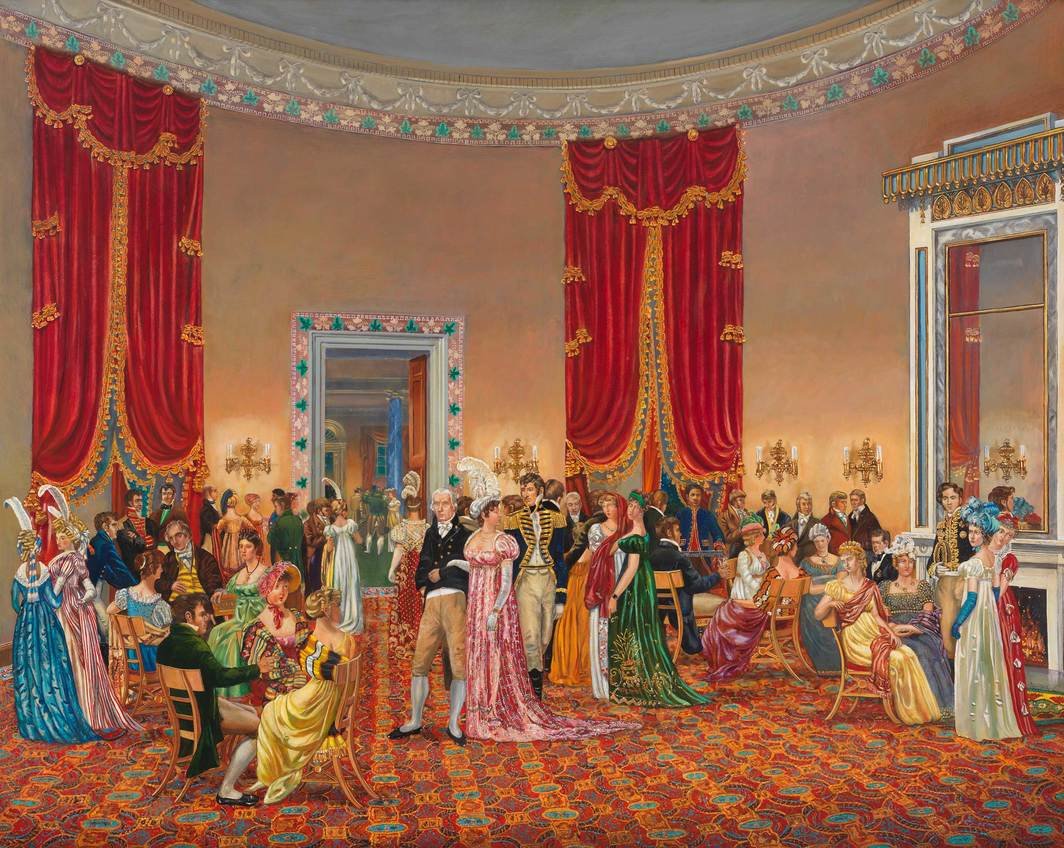














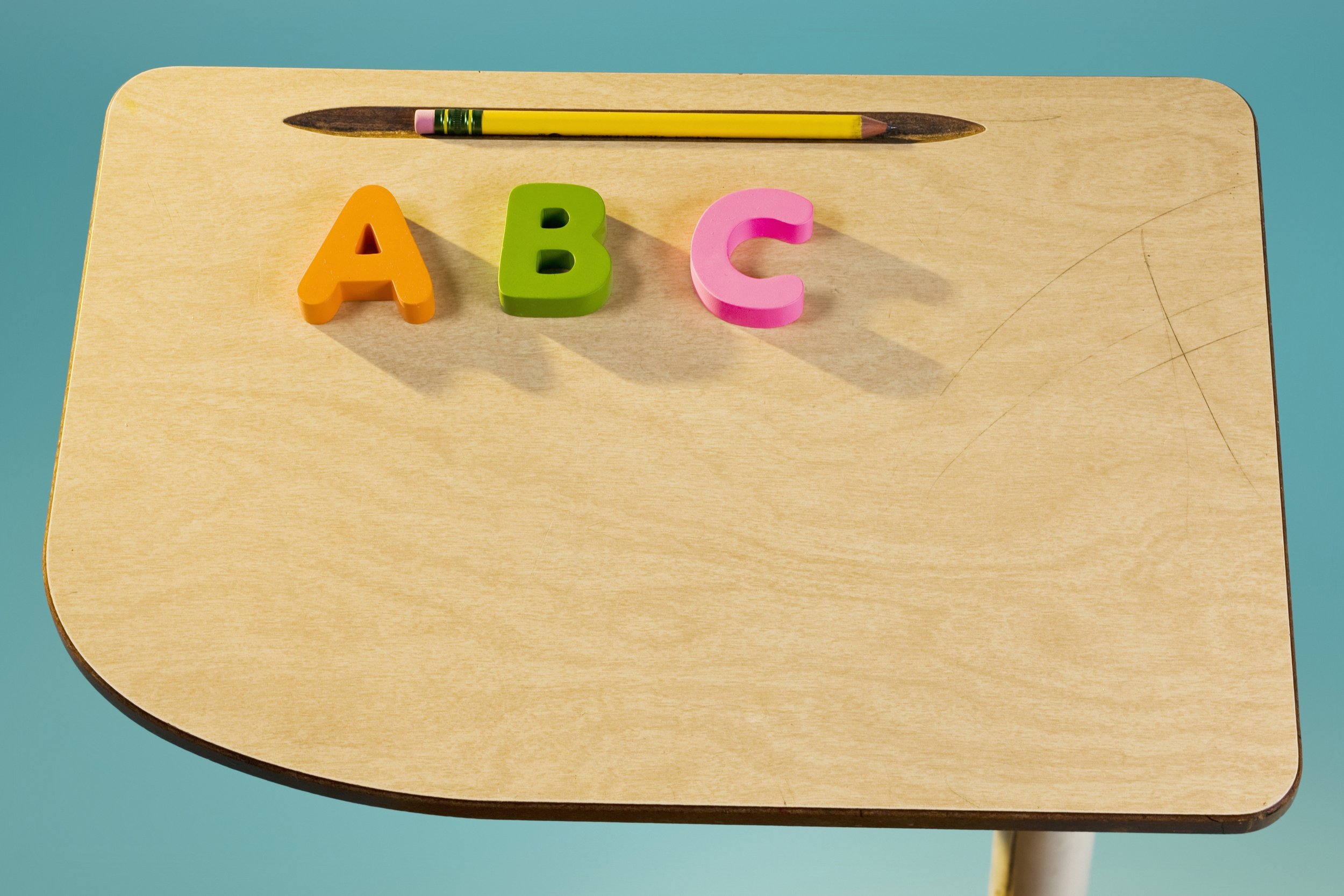


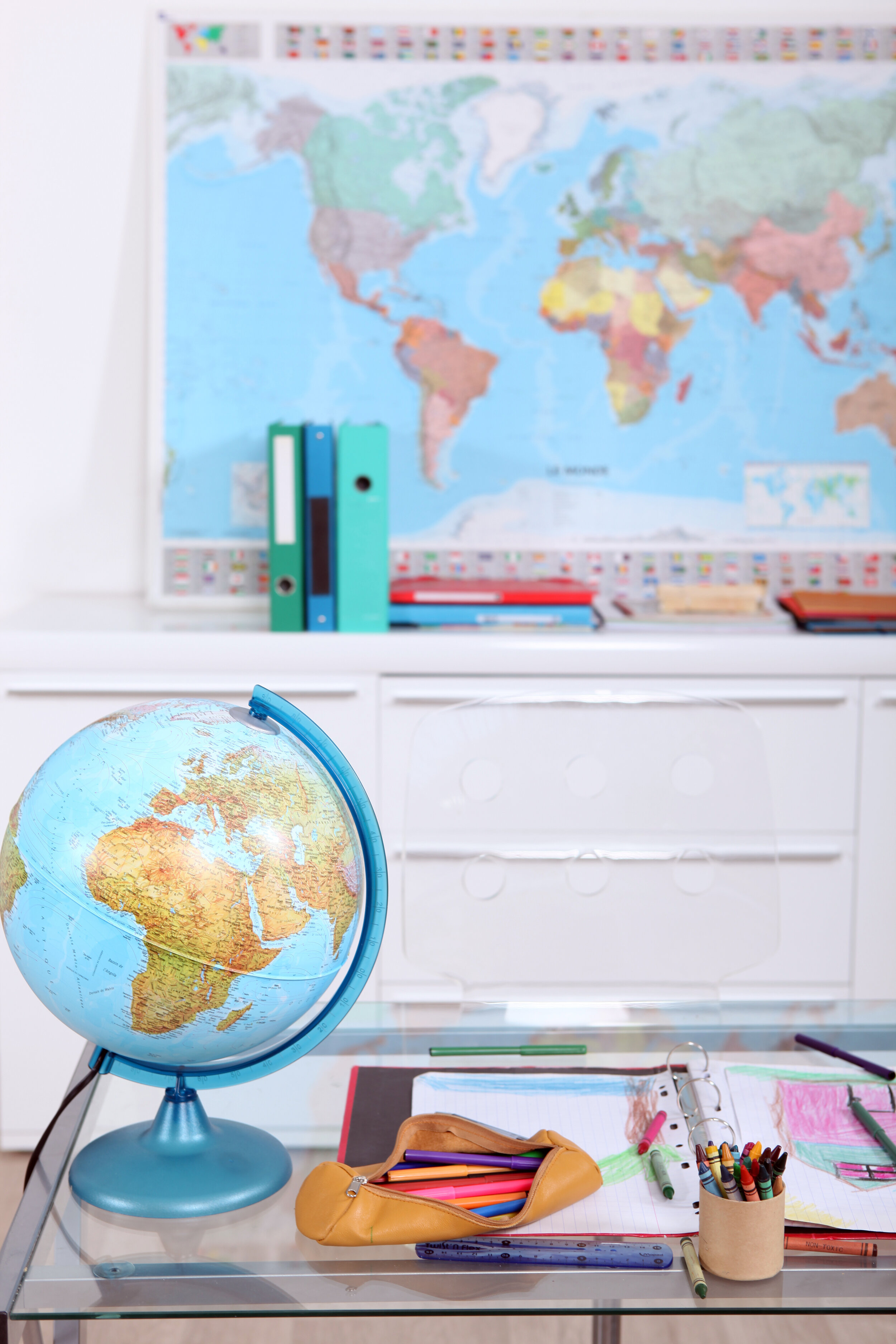
























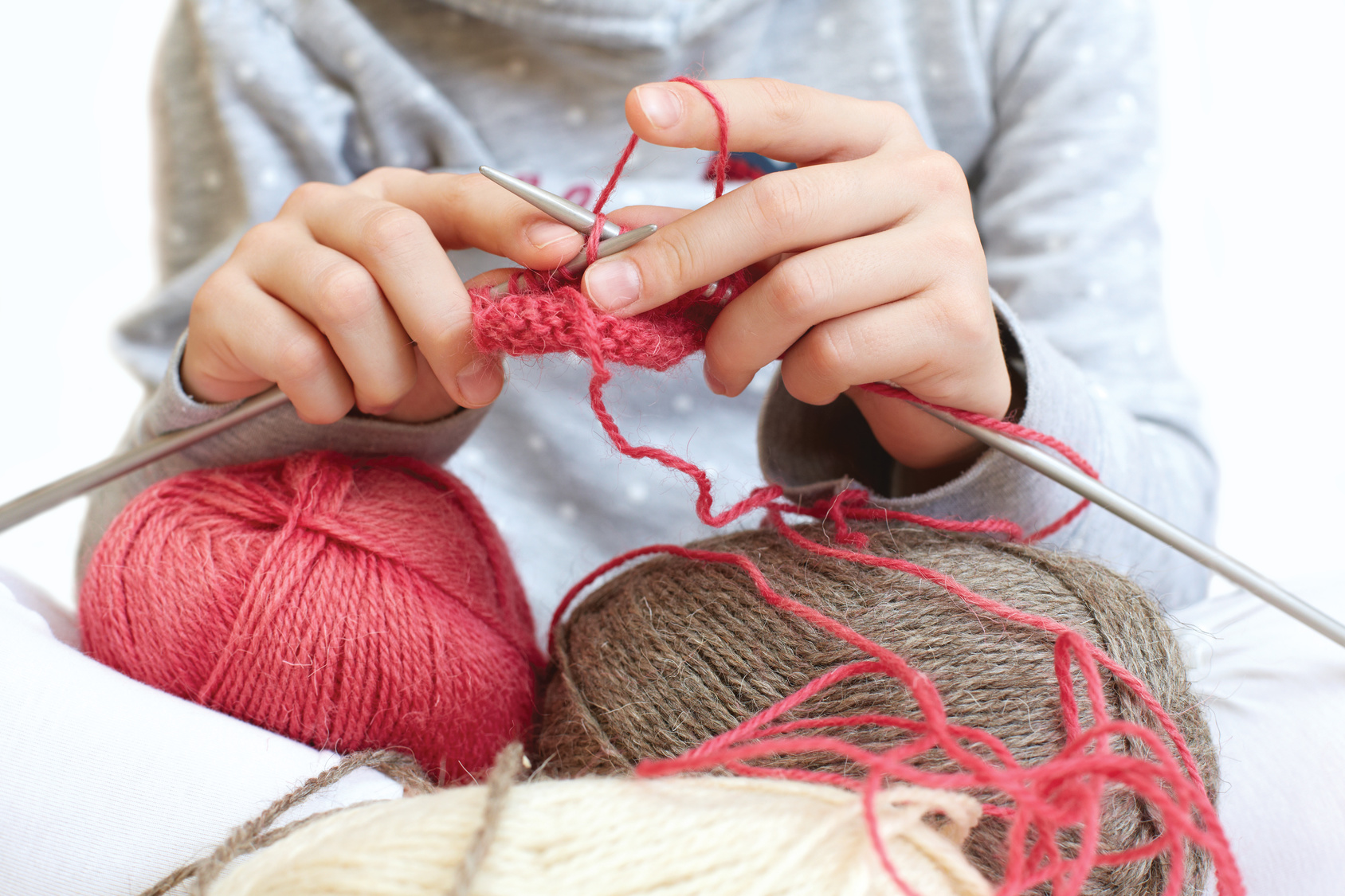





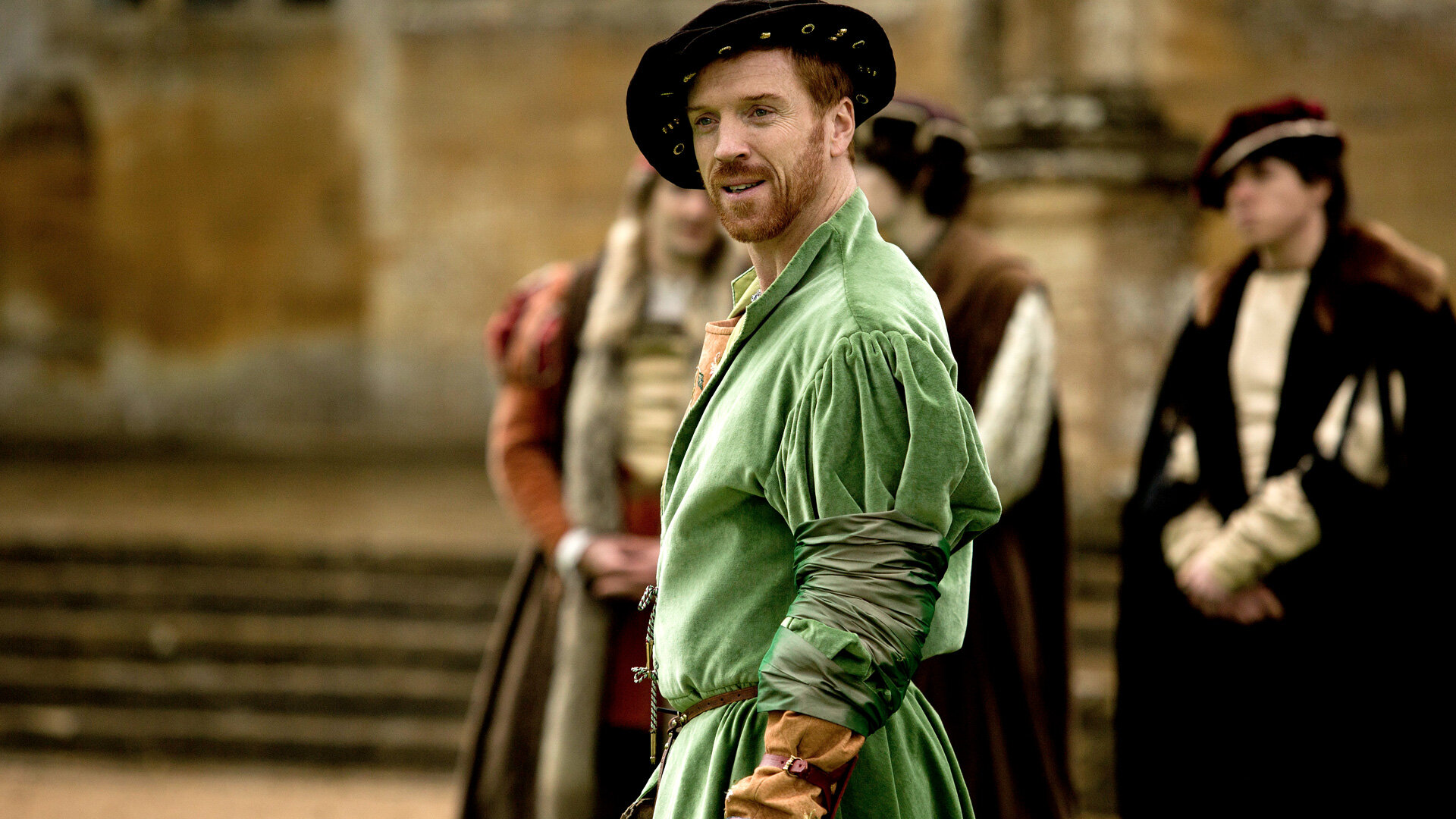









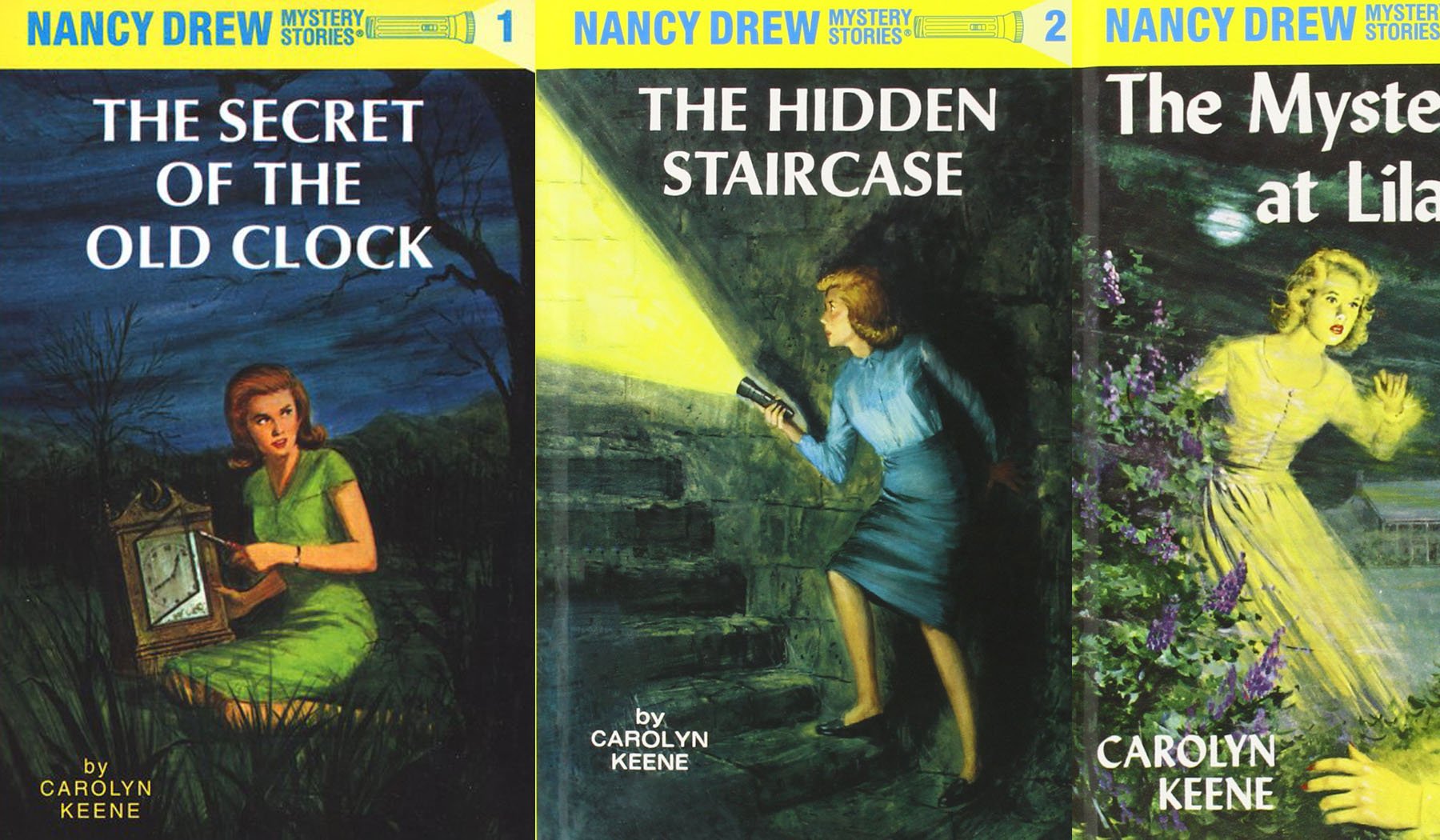










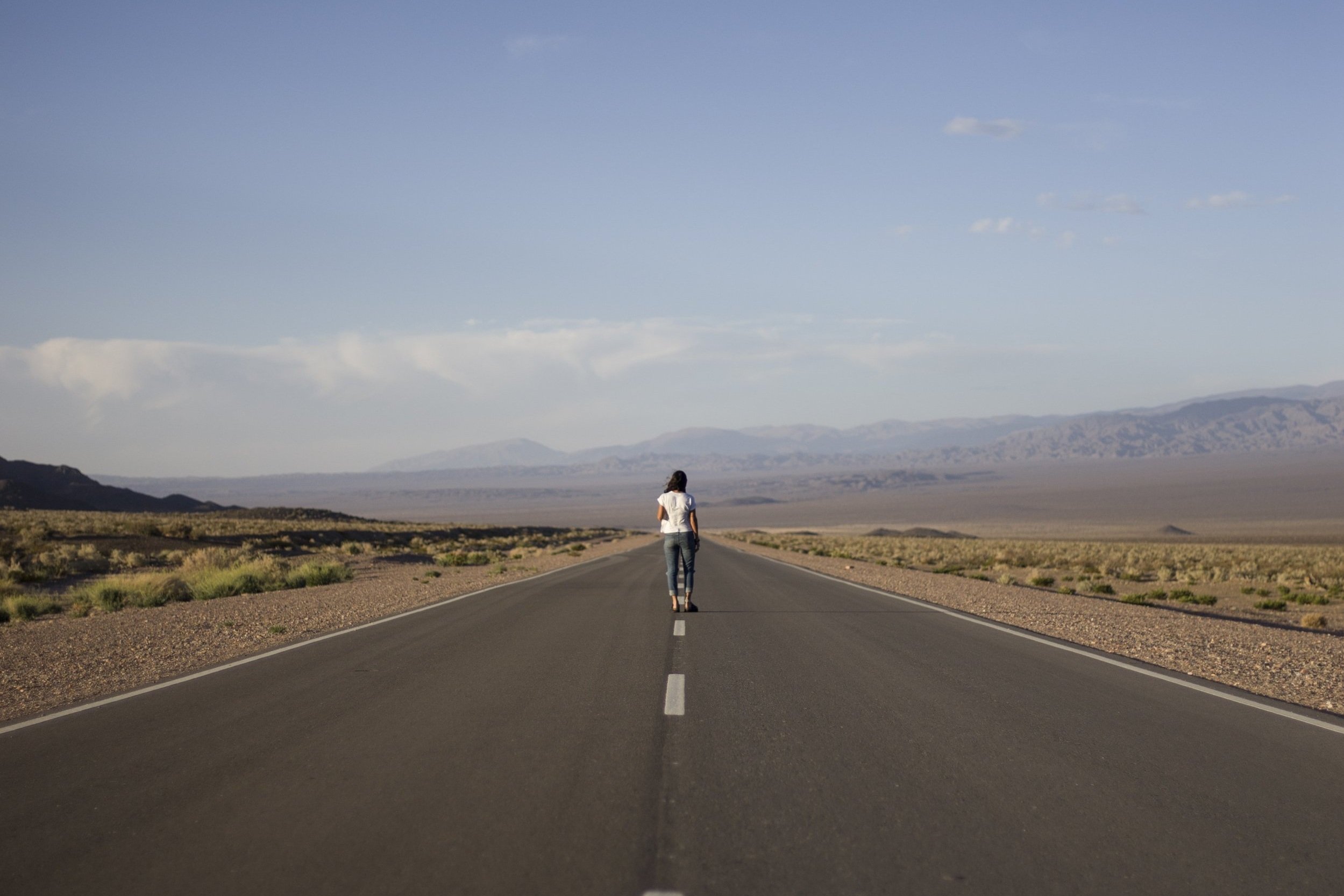














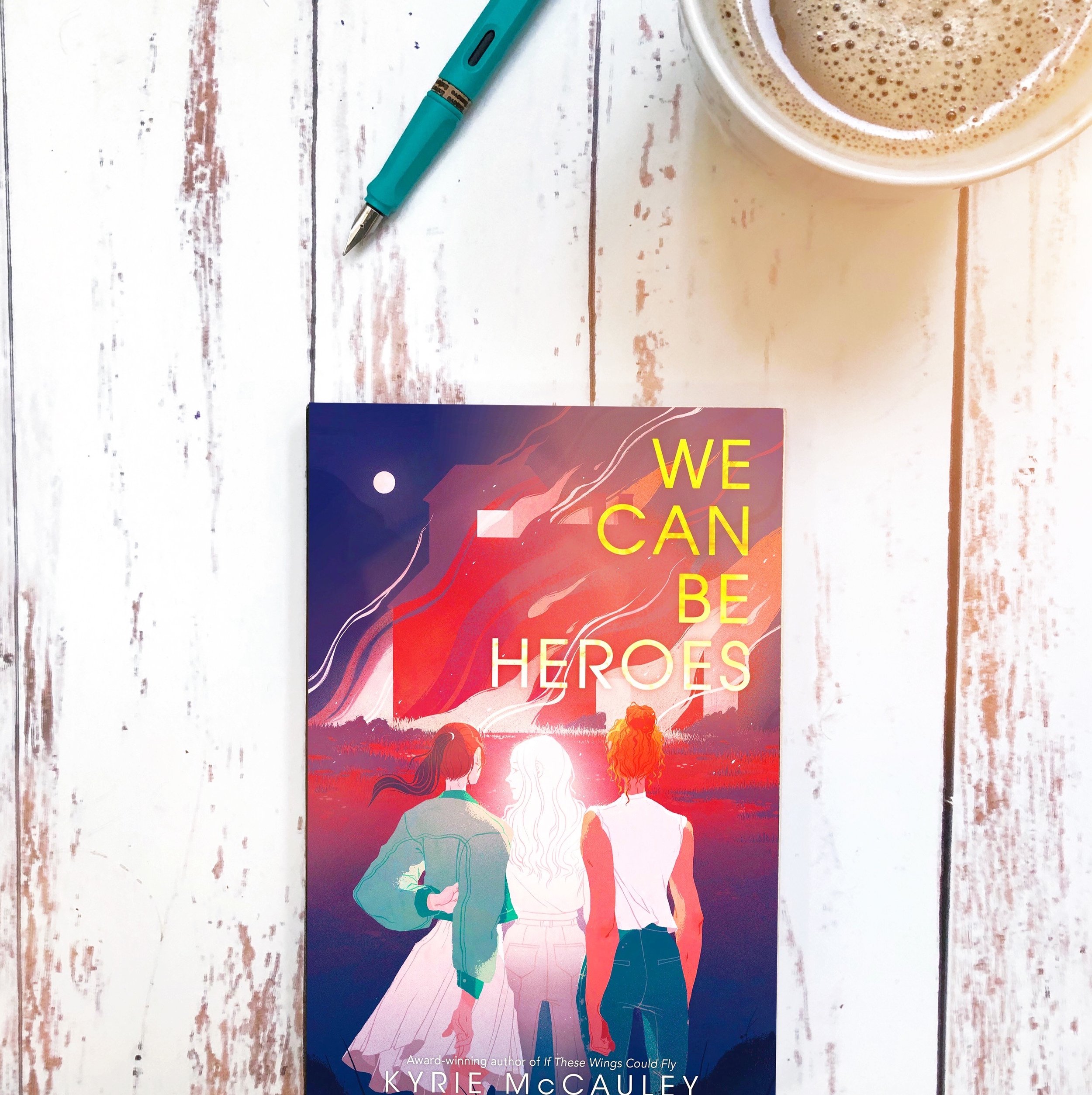





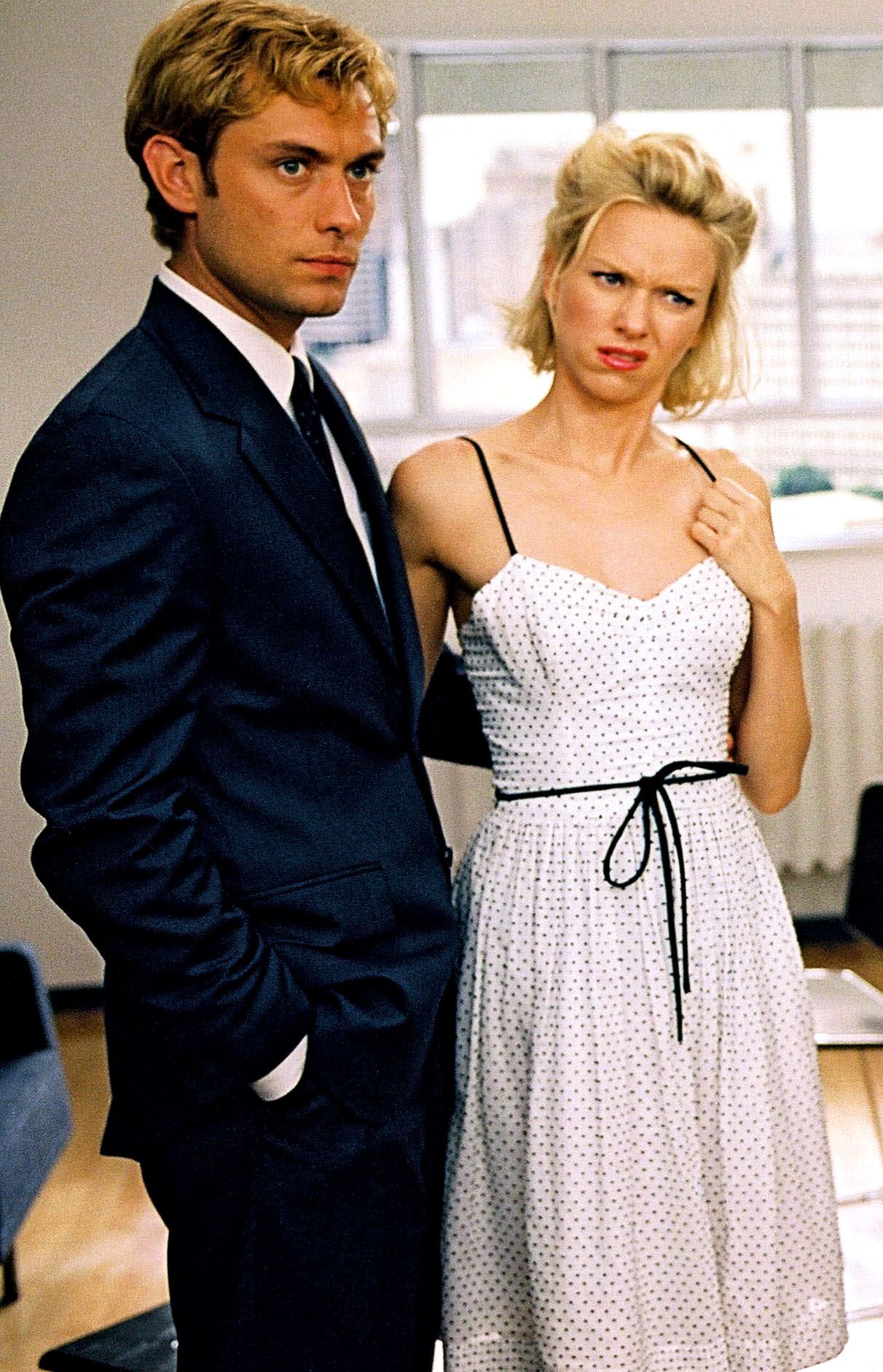









Celebrate the birthday of the renowned physicist, mathematician, astronomer, natural philosopher, alchemist, and theologian on January 4 with an Isaac Newton homeschool unit study.